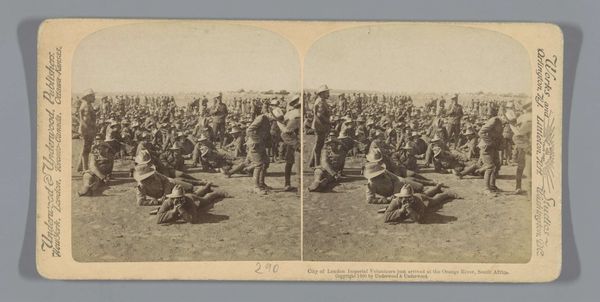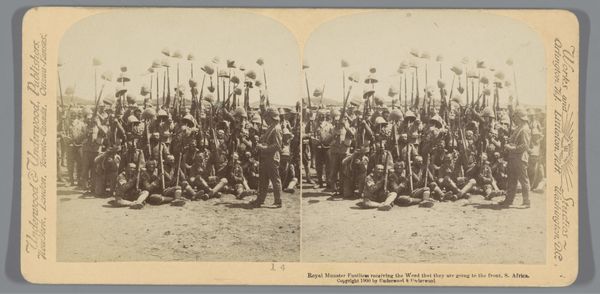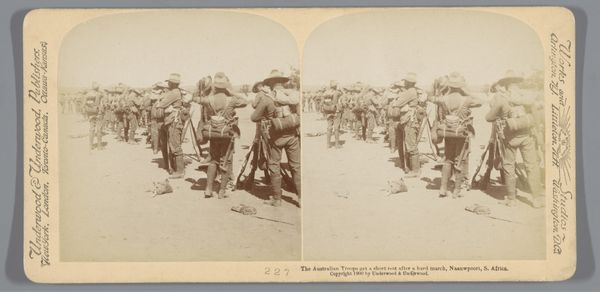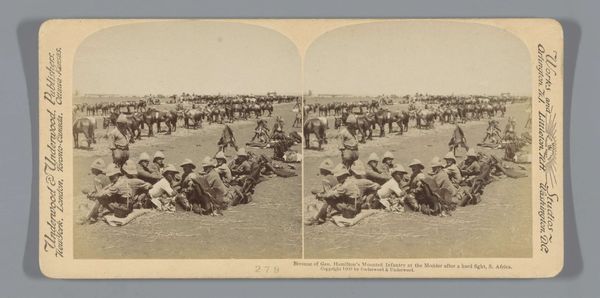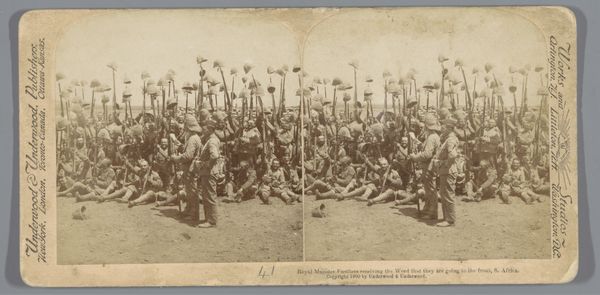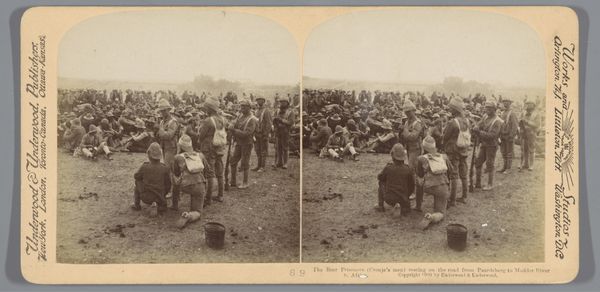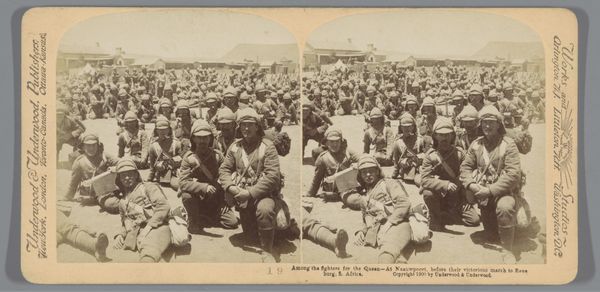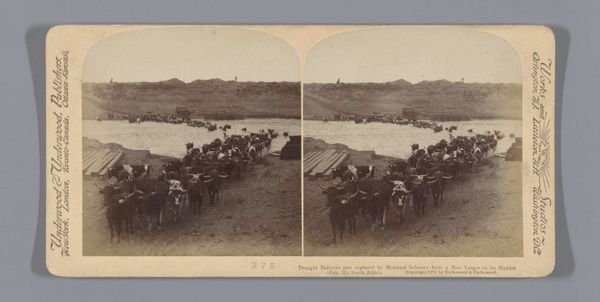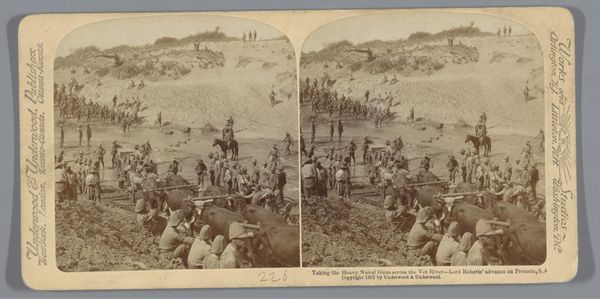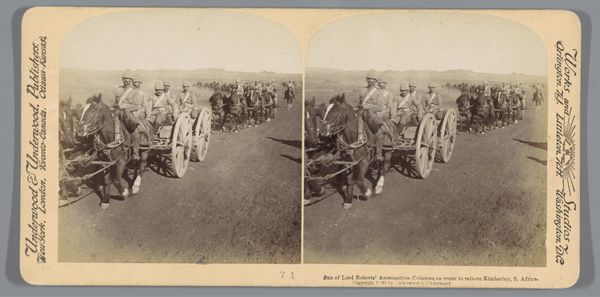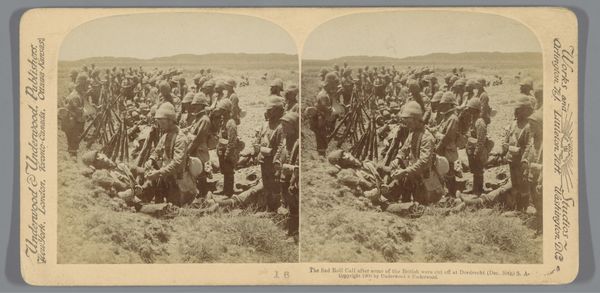
photography, gelatin-silver-print
#
portrait
#
photography
#
group-portraits
#
gelatin-silver-print
#
history-painting
#
realism
Dimensions: height 88 mm, width 177 mm
Copyright: Rijks Museum: Open Domain
Editor: Here we have an albumen silver print titled "Royal Munster Fusiliers poseren in aanvalspositie, Zuid-Afrika" from 1901. It depicts a large group of soldiers aiming their rifles, and it feels both posed and strangely vulnerable. What can you tell me about this photograph? Curator: This photograph, a gelatin-silver print, compels us to consider the processes of its creation and dissemination within the context of early 20th-century imperial ambition. It’s not just a depiction of soldiers; it’s a commodity. Underwood & Underwood mass-produced these stereoscopic images for consumption back home. Think about the labor involved in producing, distributing, and ultimately selling these prints. The seemingly straightforward act of documentation becomes intricately linked to the mechanisms of empire. Editor: So you are saying the value of the photo isn't so much its artistic qualities as the production around it? Curator: Exactly. We should ask how the production and distribution of the gelatin silver prints reinforces, or even constructs, notions of British imperial power for the consumers in Europe. What ideological work is this image doing? Are they commemorating bravery, or justifying colonial expansion? Editor: That gives me a completely different lens through which to view this image! Seeing it as less about the soldiers themselves and more about its function as a widely available commercial product changes everything. Curator: Precisely. Examining the photograph through a materialist lens opens avenues for thinking about labour, materials, and consumption beyond a simple representation of soldiers. The photograph reminds us to consider the broader implications inherent in seemingly simple mass-produced objects.
Comments
No comments
Be the first to comment and join the conversation on the ultimate creative platform.

